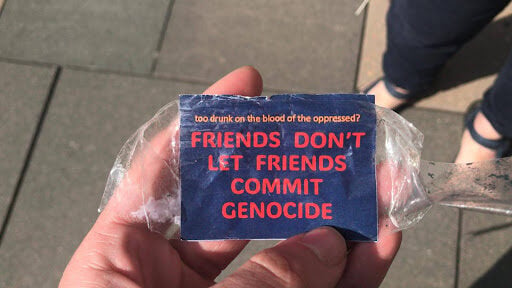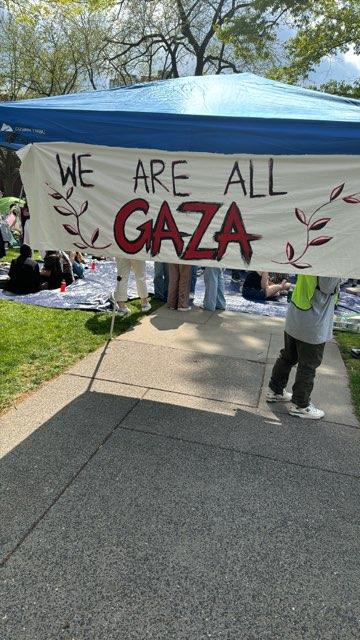
The previous parsha, Shemini, documents the culmination of a religious odyssey that was launched upon the Exodus from Egypt. The implausible dream that a house crafted by human hand could contain the overwhelming presence of an infinite God finally materializes. Immediately after this epic moment, kosher dietary laws are introduced. Religion encourages us to transcend our human limits, but it also grounds us within our humanity. As such, the Torah describes the Mikdash: a realm “beyond” the routine of our day-to-day but just the same demands that we “channel” our humanity and our eating practices toward religion. Religion is meant to enable ceremonies in the Mikdash just as it regulates and elevates meals around the dinner table.
In the wake of this message of integration between Mikdash and dietary laws, Parshat Tazria asserts an additional component that must be incorporated within religious experience. Tazria (as well as Metzora) details various “undignified” moments of human life. This parsha describes various forms of physical dysfunction such as the illness of tzara’at in which a human is infected with a highly contagious and unsightly disease. Likewise, it portrays the compromised state of a zav or zava who experience unpleasant bodily discretions. Alongside these illnesses the Torah also details the recovery process of a postpartum woman who also experiences physical frailty and weakness. These sections do not describe the human body in their maximal state of functionality!!
Given the compromised state of the people described, the Torah could have easily summarized these laws. Yet these two parshiyot are highly verbose and even appear to contain literary redundancies (which are consequently decoded by Chazal to yield important halachot). This verbal outlay reflects the fact that the Torah doesn’t flinch from any aspect of the human condition. There is no moment that isn’t dignified enough for the Torah’s interest, and God delivers both halachic regulation as well as experiential guidance for every moment of human experience. We constantly stand in the presence of God: at our most noble moments and in our most compromised physical moments. The notion that the Torah would avoid certain topics or blush at certain situations implies that religious experience is partial and can be compartmentalized into particular areas of human life. These parshiyot debunk that notion and assert the sweeping and all-encompassing nature of Torah.
In fact, the actual word “Torah” appears five times in these parshiyot, the greatest concentration of this word in the entire Torah. Since there are five different forms of the tzara’at disease, the word “Torah” is similarly reiterated five times. To dispel the thought that these unattractive moments are ignored by religion, these parshiyot repeat the word “Torah” five times, underscoring that these sections are equivalent to sections dealing with seemingly more dignified subject matter.
Over the past 20 years our community has learned the value of open and frank conversations about the entire range of the human condition. In many instances we have learned this lesson the “hard” way, by witnessing the dangers of ignoring certain topics and allowing the general culture to fill the void, oftentimes with a value system contrary to Torah values. We have learned the value of open and honest conversations about mental health, marriage, sexuality, verbal and physical abuse, racism and many other aspects of our lives that in previous generations were unattended to. In a different but related vein, the trauma of the Holocaust was too severe for the immediate surviving generation to address it freely and openly. However, over the past 40 years Holocaust awareness has spread and constitutes a core aspect of Jewish identity—as it should. In a world of easy access to information, shying away from important issues merely surrenders that conversation to alternate sources. The potential damage isn’t only limited to the particular issue about which conversation is avoided. Avoiding these sensitive but important conversations conveys that religion is partial, frightened or both. Engaging in open conversation conveys confidence and conviction that the Torah is eternally relevant and continues to provide a message for every nook and cranny of the human condition.
Yet, despite the “transparent” nature of these parshiyot, the Torah also instructs us about the language of this conversation. A male zav or female zava (who experience abnormal bodily secretions) equally convey tumah to items they sit upon. Yet the male zav is portrayed as riding upon an item (known as merkav) while the female is described as sitting upon a chair (known as moshav). The image of a horseback female is less discrete than a female “sitter,” and therefore the Torah avoids the former scenario. Even though the Torah is quite frank about the physically compromised condition of a zava, it still exhibits discretion about the manner in which her experience is described.
Without question, in the modern world, the transparency of our communal and personal discourse has come at a very steep price to our discretion and to our purity. When discussing issues of sexuality, are we careful to assess the context and timing? When rooting out all forms of abuse (as we should), are we cautious about first proving
guilt and then subsequently operating through appropriate channels? On a personal level, I have been approached several times about people who allegedly behaved inappropriately toward others. I was asked to attend to these situations and prevent further exploitative behavior. I tried to be thorough, responsible but also discrete. Of course, the primary objective was to protect any potential future victim, but I also tried to be mindful not to victimize those who may have been falsely accused or whose conduct—though inappropriate—may have been misconstrued.
The challenge of creating “discretionary” conversation extends far beyond these particular sensitive and important topics. By encouraging frankness and transparency we have created a culture of “openness” and we sometimes fall into the trap of being too open and too loose with our conversation. We sometimes too eagerly share information that was meant to be confidential, and we often speak of people in ways that perhaps should be avoided, even if the comments don’t border upon actual lashon hara. Similarly, even when we discuss important issues sometimes, our word selection is vulgar and unrefined rather than dignified and discrete. The cost of unrefined speech can sometimes far outweigh the value of transparency as our conversation can easily slide into many severe abuses of language and communication. The tilt toward transparency has created very loose-tongued conversation!
These parshiyot remind us to carefully calibrate between two important but sometimes clashing values: transparency and discretion. We must extend the religious conversation to every aspect of our human experience. Just the same we must exercise great caution about the manner in which this conversation is conducted. Otherwise, we may pay a heavy price in our mad rush toward unlimited transparency.
By Moshe Taragin
Rabbi Moshe Taragin is a rebbe at Yeshivat Har Etzion located in Gush Etzion, where he resides.












